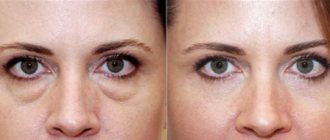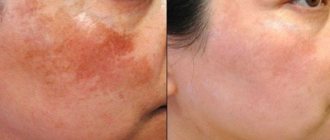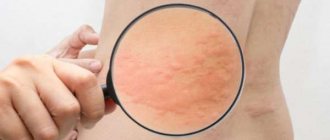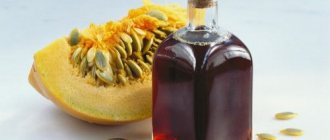Postoperative wound healing depends largely on the patient’s body: for some, wounds heal, as they say, like on a dog, while for others the process drags on for months. However, both need to adhere to certain rules for processing sutures after surgery. In this article we will look at what and how to treat postoperative sutures.
There is a guarantee of complete normal healing of the wound only if the postoperative wound is sterile. Fresh wounds are closed immediately after surgery using sutures. In this case, the sutures must be placed so that there is complete joining of the edges of the wound to completely eliminate the possible formation of a cavity.
Healing of sutures after surgery. The better to process
There are two main points on which the speed of healing of sutures after surgery really depends. First of all, this is, of course, the human body itself, which instantly begins to fight and self-heal. Secondly, the sterility of the seam. Here everything depends on how the surgeon works, namely, the suture must be of high quality, that is, without the formation of a cavity. This is a very important factor affecting the speed of healing.
Potassium permanganate and iodine have always been considered the best means for healing sutures after surgery. Ease of availability and excellent antimicrobial properties allow them to occupy a leading position among medicines.
For better healing of sutures after surgery, a calendula-based cream is usually prescribed, as it is an excellent wound healing agent. If desired, the medicinal composition can be prepared at home. In a small vessel, mix a drop of rosemary and orange oils, then mix them with the calendula cream.
Tea tree oil will help make cosmetic scars softer and less noticeable. A positive effect can be seen within a week, but only if treatment is started immediately after surgery.
Contractubex or silicone patch will serve as excellent means that will solve the problem of a hard seam, as they have a softening effect.
During the postoperative period, various complications may arise that require prompt consultation with a doctor, and sometimes surgical intervention. This includes minor deviations - redness, swelling, blood or bile discharge, or more serious ones up to the dehiscence of the seam.
Processing methods
Methods for treating scars
The key to successful healing of the suture is timely, regular and correct therapy. The time and effectiveness of the result are affected by:
- sterility
- processing agents
Before you start treating a seam, you need to understand that if an infection enters an open wound, it will not be so easy to cure the process. Therefore, scar treatment begins only after disinfection of hands, instruments and all additional equipment.
Treatment of seams begins with the use of antiseptic drugs:
- iodine. It is not recommended to use frequently or in large quantities. The wound is lightly soaked with cotton wool slightly moistened with iodine.
- potassium permanganate. Use strictly according to the instructions in compliance with the dosage
- brilliant green
- medical alcohol
- hydrogen peroxide
- special anti-inflammatory drugs
Read: Antibiotic Cefazolin and features of its use
In addition to pharmaceutical drugs, you can use home remedies:
- tea tree oil
- Mix beeswax 100 g, sunflower oil 400 g and cook on the stove for 15 minutes. Apply the cooled compound to the seams
- Mix calendula extract with petroleum jelly or cream, add a little orange or rosemary.
The choice of medication should be coordinated by a doctor. To avoid the patient's individual intolerance to the drug or allergic reactions. To maximize healing time, the following rules for treating scars should be followed:
- disinfect all necessary tools for processing
- Slowly release the scar from the bandage. If the wound is still fresh and the bandage does not want to come off, then you need to pour a little peroxide on the bandage
- take a cotton swab or gauze and treat the scar with the selected antiseptic
- Apply a new clean bandage on top and secure it so that it does not fall off
Important! Treatment is carried out in the morning and evening. Treatment can be increased only after consultation with your doctor. Constantly getting the seam wet is not always beneficial. The scar should be carefully monitored for the absence of inflammatory and putrefactive processes. There is no need to try to remove the scabs from the wound ahead of time; it is better to wait until they fall off on their own. When washing, be careful not to accidentally damage the seam with a washcloth.
If during the postoperative period the suture begins to bother you, it hurts too much or putrefactive processes form, you should immediately consult a doctor.
How to properly process seams?
Usually, sutures are ligated in a clinic, especially in the first time after surgery. However, in some cases, dressing is carried out independently at home. But only when the doctor considers that the patient can already perform this procedure independently. To do this, you will need the following tools for processing seams: tweezers, cotton swabs and sterile cotton wool.
The healing suture needs air access for faster tissue regeneration. Therefore, you should not be afraid to remove the bandage once again, but you should not rush to extremes. Remember, everything should be in moderation!
Treatment of sutures after surgery is a prerequisite, which ensures rapid and proper healing of wounds. It should be noted that the healing of sutures after surgery depends on a large number of factors. For some, this process goes through successfully in a few days, while others have to suffer for several months.
Complete healing is only possible if the postoperative wound is sterile.
The sutures after surgery are adjusted in such a way that the edges of the wound are completely joined. This completely eliminates the formation of cavities.
How to get rid of inflammation?
How to get rid of inflammation?
You can tell that the scar is inflamed by the following symptoms:
- increased in size
- redness
- painful sensations
- dense formation
- increase body t
- increased blood pressure
- general weakness, muscle pain
Inflammation can begin due to:
- infection in the wound
- causing injury to subcutaneous tissues
- allergic reaction to suture material
- low patient immunity
Inflammation can occur due to insufficiently well-treated instruments or due to improper treatment of the wound.
The speed of healing directly depends on the individual characteristics of the body: weight, age, nutrition, and the presence of chronic diseases. For overweight people, the healing process always takes longer. In young people, cell renewal occurs faster. Proteins help in healing the seam. It is recommended to eat more dairy products and meat.
When contacting a surgeon, the doctor will provide assistance:
- remove stitches if necessary
- Wash the wound and treat it with an antiseptic
- install drainage to remove purulent formations
- prescribe anti-inflammatory drugs, antibiotics
Timely treatment will protect against complications such as gangrene and sepsis. In addition to medical recommendations, it is also recommended to perform the following actions:
- process the seam twice a day
- Take a bath carefully so as not to injure the seam with a washcloth
- take a complex of vitamins and microelements
- eat double portions of protein foods
- sanitize your mouth to prevent the development of infection
How can you treat the wound area after surgery?
Every person should know what exactly the stitches should be treated with after surgery so that the healing process takes place in the shortest possible time. Various antiseptics can be used for these purposes. Such agents include iodine, potassium permanganate, and alcohol. You need to be very careful with iodine, as in large quantities this product can dry out the skin.
If desired, you can also use ordinary brilliant green, which should be used to treat the wounds every day for 6 days. This can be done very conveniently using ordinary cotton swabs. The problem is that with this medication it is often not clear how the wound is healing and whether any complications have appeared. Zelenka can be replaced with fucorcin. This product should be used to treat not only the seam, but also the area around it. However, experts warn that after the wound has healed, it will not be easy to wash off fucorcin.
If you have hydrogen peroxide on hand, then the problem can be considered half solved. A small piece of gauze should be soaked in hydrogen peroxide and applied to the affected skin. A slight burning sensation may occur. Don't worry, as this reaction is considered normal.
40% medical alcohol can be used if the seam is inflamed in some places. In this case, it is not worth treating areas of the skin where there is no inflammation, as this can lead to their drying out, which will significantly slow down the process of tissue regeneration. If after this the inflammatory process does not go away, and there is constant aching and pulling in the area of the suture, then you should definitely seek help from a specialist.
Also very popular are Contractubex ointment and silicone patch, which prevents the formation of keloid scars.
In the first days after surgery, it is recommended to apply a bandage with a hypertonic solution to the affected areas of the body.
This solution is prepared quite simply: pour 2 tablespoons of table salt into 1 cup of boiling water. The finished product should be cooled to room temperature, a gauze cloth should be moistened in it, applied to the suture site and bandaged with a bandage.
Often, in the second week after surgery, the patient begins to complain of unpleasant itching in the suture area. This phenomenon is considered quite normal, since it is during this period that the active healing process takes place. These unpleasant symptoms can be eliminated using a cotton pad generously soaked in a novocaine solution.
Often after the operation, for one reason or another, the sutures come apart, which causes severe pain and the appearance of unpleasant discharge. In this case, you should not wait long; you should immediately seek help from a specialist. This will help avoid adverse consequences. In such situations, doctors, as a rule, resort to Vishnevsky ointment. This remedy helps remove pus from the wound and promotes its speedy healing.
What local remedies can be used for suppuration?
"Baneocin" is used in surgical practice as a local antibacterial agent. The drug contains neomycin and bacitracin, which suppress the growth of opportunistic microflora in different ways. The different capabilities of the two antibiotics make it possible to destroy all pathogenic microflora present on the surface of the wound. The product is active against Staphylococcus aureus, which has strains resistant to many antibiotics. This determines the great potential of the drug ointment in the fight against infection. It can be used to treat a wet seam with signs of inflammation several times. The product is used for 5 to 10 days, then discontinued, switching to lighter drugs.
Ointment for postoperative sutures "Stellanin PEG", containing diethylbenzimidazolium triiodide, has an antimicrobial effect, relieves inflammatory processes and significantly accelerates tissue regeneration. It is often used in surgery to treat weeping sutures. The active substance has serious contraindications. Before using it, you should consult a doctor for advice. He must say whether the sick person can use it.
This ointment is often used in surgical practice. It is applied in a thin layer to the seam, and a sterile gauze bandage is applied. The skin around the wounds is treated with a pharmaceutical form to suppress the proliferation of pyogenic bacteria. The duration of treatment with this remedy is up to 14 days.
Levomekol ointment for healing postoperative sutures can be used if there is purulent content. This drug is traditionally used by doctors to treat any infected wounds. It has no contraindications other than individual intolerance.
Eplan cream, which has the ability to shorten the duration of phases and increase the speed of regeneration processes, allows a surgical wound to heal faster. When applied to the area where there is suture material, swelling is relieved and the feeling of pain is reduced. It is recommended if bacteria, microorganisms and fungi have begun to multiply under the bandage.
All these ointments should be used on the recommendation of the attending physician, who should monitor the healing process and take timely measures if the wound festers.
How to process seams?
It is important to know not only how to treat seams, but also how to do it correctly. Treatment of wounds should be carried out 2 times a day, without skipping a single procedure. In some cases, on the recommendation of doctors, wounds can be treated more often.
The dressing must be changed until the stitches are removed. Dressings should be carried out in hospital rooms that are designed specifically for this purpose. Such daily procedures will help speed up the healing of the skin. The thing is that air helps the joints dry out faster. If dressings are performed at home, then you need to be as careful as possible. The bandage should be removed very carefully, as the bandage often sticks to the wound. Only after this can the affected area be poured with a thin stream of hydrogen peroxide, and then with an antiseptic.
An important rule is that before treating postoperative injuries, hands must be perfectly clean. Therefore, before starting the procedure, hands must be thoroughly washed with soap, preferably up to the elbows.
When treating postoperative wounds, you should never remove scabs or remove whitish plaque, as this indicates the structure of a new layer of epithelium. If this layer is damaged, depressions may appear, which will lead to the formation of scars.
In most cases, sutures are removed 7-10 days after surgery. This procedure is quite painless, so it takes place without any anesthesia. Immediately before starting this procedure, the wounds are treated with special means. Once the sutures are removed, bandages are no longer necessary. You can take water procedures only after 2-3 days.
Wound treatment prognosis and possible complications
The process of regeneration of damaged tissue is influenced by the patient’s age, immunity, history of illness, the presence of infection, and the nature of the operation. The correct way to treat an injury with ointments, maintaining sterility, and regularity are factors that contribute to skin renewal. If you follow the doctor's recommendations and aseptic rules, the healing process occurs faster. Epithalization depends on the location and nature of the wound.
Pathologies that increase the resumption time:
- oncological diseases;
- diabetes;
- anemia;
- skin diseases affect the healing process;
- the presence of neoplasms near the wound - atheromas, lipomas, moles;
- inconvenient localization - ear, mucous membranes, face.
Chemotherapy after surgery increases the duration of wound healing. To regenerate the damaged area, special ointments are prescribed.
Possible complications:
- traumatic shock;
- the appearance of exudate, suppuration;
- hematomas;
- necrosis of nearby tissues slows down the wound healing process;
- infection;
- sepsis.
When treating wounds after surgery, daily monitoring of the process is carried out. With prolonged granulation, therapy is adjusted. Monitor microbial and bacteriological contamination. To speed up the healing process, use special ointments as prescribed by a doctor.
The article has been verified by the editors
How to treat sutures after a caesarean section
After a cesarean section, it is very important to properly handle the sutures. After such surgical intervention, the wounds are often treated with a 5% solution of potassium permanganate for 2-3 days. The dressing should be changed constantly. This will help you notice suppuration in time. The threads are usually removed on the 6th day before discharge. When taking a shower, you should never put too much pressure on the seam area and use hard sponges for washing. This can cause keloid scars.
After the birth of the baby, very often, the young mother is given internal and external stitches. Internal ones are considered to be those that were applied for ruptures of the walls of the vagina or cervix. There is no need to look after them. Care should be taken of the external seams that are placed on the perineum. During the first time after surgery, midwives take care of everything. They moisten the affected areas twice a day with a solution of potassium permanganate or brilliant green. After discharge, such activities should be carried out independently after each bath.
If scars do appear after the birth of a child, they can be easily removed using a scar resurfacing procedure. Laser resurfacing is a very effective procedure that is carried out today in many beauty salons.
Types of postoperative scars
The dermatologist decides how to remove a scar after surgery by assessing the type of defect. There are 3 types.
Normally, after damage to the skin, 2 processes of the opposite direction are launched at once. The first is the formation of connective (that is, scar) tissue, the second is its splitting. When they are coordinated, a normotrophic scar is formed - an unnoticeable defect of the same color as the surrounding skin.
If the dissolution of scar tissue prevails over its formation, the scar will resemble a pit and is called. Such defects often form after operations that did not require suturing: moles,.
When formation prevails over destruction, a pinkish hypertrophic scar protrudes above the skin appears. Its appearance is promoted by suppuration or constant traumatization of the wound area. It forms when surgery was performed in an area with a large amount of subcutaneous fat. The likelihood of the formation of such defects is reduced if, after removing the sutures, you use an ointment for healing scars after surgery: Levomekol, Actovegin, Methyluracil or Solcoseryl.
If there is a genetic predisposition to the skin, it may form. This is a formation protruding above the rest of the skin, pink or whitish in color, smooth and shiny. It begins to grow 1-3 months after the stitches are removed. The chance of its occurrence increases if the skin is dark, surgery was performed on the chest, or the intervention was performed during pregnancy or adolescence. The occurrence of this type of defect cannot be prevented.
Scar removal methods
The choice of method by which postoperative scars and scars should be removed is within the competence of the dermatocosmetologist. Only he, based on an assessment of not only the type of skin defect, but also the blood supply to the integumentary tissue, can decide whether the following are applicable here:
- ointment for scars after surgery;
- injection treatment method (mesotherapy, drug injections or steroid injections);
- physiotherapeutic methods of influence;
- deep dermabrasion;
- method of chemical peeling of scar changes;
- one of the mini-operations, when the scar can be removed either by exposure to liquid nitrogen, or a laser, or current pulses;
- Plastic surgery.
You should not self-medicate: a folk remedy for post-operative scars often becomes a waste of time, which later makes it difficult for even a laser to deal with them. A dermatologist will tell you exactly when you can try using ointment, and when more aggressive methods are needed.
How to treat postoperative scars at home
At home, you can use local remedies such as: creams for resolving scars after surgery, ointment-based preparations, and special patches. An excellent help for such therapy is the use of physiotherapeutic procedures (phonophoresis with lidase and hydrocortisone) and compression methods (pressure treatment, when the same drugs are applied under a pressure bandage).
Kelofibrase
This is a drug based on urea, a substance that dissolves tissue, as well as sodium heparin, a compound that thins the blood (this improves microcirculation) and has an anti-inflammatory effect. Effective for removing fresh post-operative scars.
Contractubex
This is a gel based on onion extract, which has an anti-inflammatory effect. It inhibits the growth of cells that give rise to scar tissue. This also includes heparin, which has an anti-inflammatory, anti-allergic effect, softening scar tissue. The third main substance of the drug is allantoin, which promotes wound healing and increases the ability of tissues to bind water.
Gel and spray Kelo-kot
The drugs are based on silicone and polysiloxane. Together they form a film on the surface of the scar that will prevent the growth of scar tissue, restore interstitial water balance, and eliminate itching and a feeling of skin tightness.
Dermatix
It contains silicon dioxide (abrasive particles) and polysiloxanes. Its effect is not much different from the effect of Kelo-Kot: moisturizing the skin, eliminating itching, fighting scars and the appearance of pigmentation on them.
Skargard
This is a scar cream after surgery. It contains silicone, the actions of which are described above, hydrocortisone, a hormone that has a pronounced anti-inflammatory effect, and vitamin E, which softens scar tissue.
Gel Fermenkol
It consists of enzymes that break down collagen (collagen fibers form the basis of scar tissue). Can be used to treat both fresh postoperative scars and those that are more than 6 years old. In the latter case, it is better not to smear the scar, but to apply Fermencol under the influence of electrophoresis.
Clearvin
This is an ointment based on natural ingredients, made according to an Ayurvedic recipe. Thanks to its active ingredients, it penetrates deep into the tissues, “switches” regeneration in them so that they themselves begin to displace the scar defect, replacing it with normal skin.
Mepiderm scar patch
This is a silicone patch combined with a compress
ionic (compressive) layer. This complex creates sufficient moisture in the scar tissue, which leads to its rapid resorption.
It has different sizes, which allows you to choose it individually. Its color is flesh. Before application, the skin should be treated with water lotion and dried with a dry cloth. It is advisable to remove hair at the application site.
Contraindications to treatment at home
It is better not to decide the question of how to smear the formed scar while there are such conditions at the site of the defect as:
- redness;
- herpes;
- the appearance of reddish vessels;
- manifestations: weeping areas with individual blisters and crusts on them.
It is contraindicated to begin treatment of scars during exacerbation of an existing chronic disease, during allergies, especially with skin manifestations, during any infectious disease.
Treatment in a dermatocosmetologist's office
Let's look at what scar correction methods professionals offer.
Mesotherapy
The method involves injecting a “cocktail” of (the main natural “filler” of the skin), vitamins and enzymes into the area near the scar. The effectiveness of the method is low.
Administration of glucocorticoid hormones
The method is based on the introduction into scar tissue of drugs based on synthetic analogues of hormones produced in the human adrenal glands (“Triamcinolone acetate”, “Hydrocortisone suspension”). There they, having a pronounced anti-inflammatory effect, should stop the production of connective tissue, and this will significantly reduce the scar after surgery.
This is how hypertrophic and keloid scars are treated.
Peelings
This is the name given to exfoliation of the surface layers of skin within the epidermis so that new, healthy layers appear in their place. Since the scar is not the epidermis, but connective tissue, there is no need to be afraid of causing deeper damage (the germ layer will still not be deformed due to its absence).
To treat scars, mechanical peeling is performed (microdermabrasion, using small abrasive particles) or its chemical analogue when acids are used (for example,).
Scar removal using deep mechanical dermabrasion
Cryotherapy
It is based on the effect of liquid nitrogen. It causes necrosis of pathological tissue, in place of which healthy skin is formed.
The depth of cryotherapy is not 100% controlled. More than one procedure may be needed to remove a scar. Healing after each of them takes up to 14 days, the wound is wet and can become infected.
Laser resurfacing
This is the best way to remove scars after surgery. It involves the application of microburns both on the area of the defect itself (because of this, the scar is “compressed”), and on a small area along its perimeter. As a result of the last impact, healthy skin begins to form, which displaces scarred skin.
For complete correction, you may need not 1, but several procedures. Healing occurs under a dry crust, so infection is impossible here. The crust disappears after 10 days.
Scar correction using laser resurfacing
Seam care in special cases
There are special cases when sutures do not heal as expected. They need careful care. They are not particularly different from the treatment behind conventional postoperative sutures, but still require a little more attention.
Dry scar care
When a postoperative suture begins to form a dry scar, it should never be removed. The dry skin will fall off on its own, or with the help of medicinal and folk remedies. In the shower or bath, you should try not to get the scar wet to avoid damage by bacteria and inflammation. Systematically treat the scar with aseptic means, smear it with creams or gels.
What to do if the seam gets wet
If the seam begins to get wet, it means that inflammation has formed in it. To prevent its development and speed up the recovery process, as well as healing, it is necessary to constantly treat the surface of the seam with aseptic, bactericidal and anti-inflammatory agents.
Apply anesthetic cream to the seam as necessary. After each procedure, apply a sterile bandage. When the seam more or less begins to heal, you can do air baths for no more than 5 minutes.
What to do if the seam festers
If the sutures become suppurated, you should urgently contact a surgeon. He will examine the seam, cut it at the place of suppuration or, if there are threads, unravel them. Next, he will wash the wound, treat it with antimicrobial, anti-inflammatory solutions and apply a sterile bandage lubricated with wound healing cream.
After this, the seam must be carefully monitored and cared for , otherwise the healing process will take a long time.
Long-term non-healing postoperative sutures cause many people to worry about their health. No need to worry. It is enough to be more careful, properly handle and care for the seam, and do everything according to the doctor’s recommendations. After a short time, the seam will heal and stop bothering you.
Take care of yourself and be healthy!
Don't miss the most popular articles in the section:










